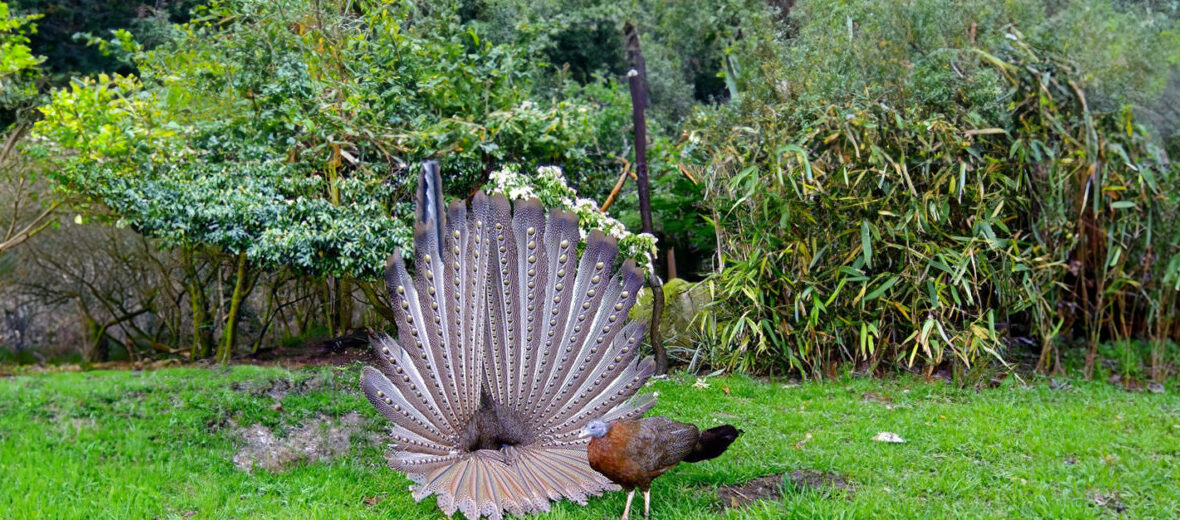
The great argus, aka greater argus or Kuang raya (the great pheasant), is a large pheasant known for their amazing plumage and courtship behavior. These birds hail from Brunei Darussalam, Indonesia, Malaysia, Myanmar, and Thailand. They are now extinct from Singapore. Due to habitat loss and destruction at the hands of farming, ranching, and the logging industry; hunting; trapping; and climate change that results in severe droughts, these pheasants are listed as Vulnerable by the IUCN. Their numbers are also decreasing.
First the Stats…
Scientific name: Argusianus argus
Weight: Up to 6 lbs.
Length: Up to 79 inches, including their tail
Wingspan: Up to 2.36 feet
Lifespan: Up to 20 years
Now on to the Facts!
1.) Carl Linnaeus first gave these birds their specific name in 1871.
2.) Due to their short wings and large bodies, they have poor flight skills and tend to spend much of their time on the ground.
3.) The young males develop their adult plumage within their 3rd year.
4.) These birds are sexually dimorphic in that females are smaller and duller than males and possess fewer eyespots on their plumage.
5.) Fruit, berries, seeds, leafy plants, and a variety of insects, and invertebrates are all on the menu.
But wait, there’s more on the great argus!
6.) The male will clear a spot in the forest and prepares his dancing ground. He then announces himself with loud calls to attract nearby females, then he dances for her with his wings spread into 2 large fans, showing hundreds of “eyes” while his true eyes are hidden, staring at her; all the while stomping his feet.
7.) Despite previous beliefs, these birds are monogamous (mate for life). They are not polygamous (1 male mates with several females).
Did you know…?
The tail feathers on males can measure up to 4 feet long!
8.) Females lay up to 2 eggs that hatch in up to 24 days.
9.) Tigers and crocodiles prey on these pheasants.
10.) The Minnesota Zoo, Harewood House, and others currently participate in breeding programs aimed at saving the great argus from extinction.
Now a Short Great Argus Video!
Be sure to share & comment below! Also, check out the Critter Science YouTube channel. Videos added regularly!
Want to suggest a critter for me to write about? Let me know here.
Some source material acquired from: Wikipedia & IUCN



